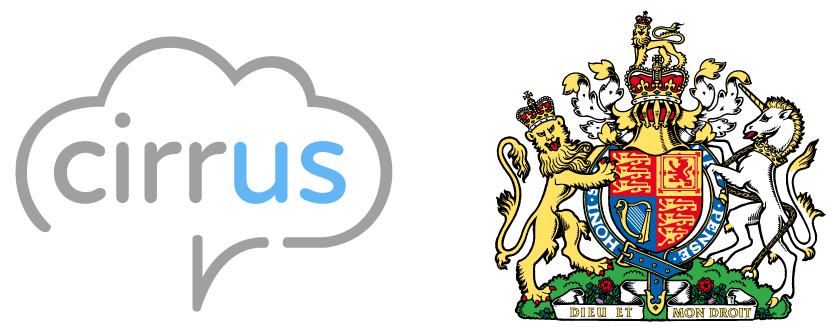Published on Contact Centre Monthly
It’s no secret that running a public sector contact centre can be akin to walking on a tightrope. Striking the right balance between operational efficiency, customer satisfaction, and employee morale can be quite challenging.
In this article, we will outline the most common challenges that face public sector contact centres and the solutions that can be implemented to help resolve them.
Overview of Challenges
Public sector contact centres are pivotal connectors between the public and national and local services. However, they often face a myriad of issues hindering them from functioning optimally. Cirrus has identified the following challenges as being the ones that are most prominent and can cause significant issues.
- Poor Customer Experience
- Low Employee Retention
- Lack of Budget
- Long Wait Times
- IT Issues
- Too Many Tools
- Conflicting Priorities
- Lack of Advancement Opportunities
Below, we will provide you insight into each challenge, followed by viable solutions that contact centre technology can offer.
Challenge 1: Poor Customer Experience
One significant challenge that often plagues public sector contact centres is the issue of a poor customer experience. In this digital age, where social media platforms are rife with reviews and ratings, one bad experience can drastically affect the reputation of your service. It’s a stumbling block experienced by many industries and can be attributed to a number of reasons, such as long wait times, ineffective communication, or even poorly trained agents.
Solutions
Implementation of Streamlined Feedback Systems: Customers appreciate when their input is welcomed and acted upon. By incorporating systems such as X,Y,Z centres can ensure that their customers are receiving detailed information, while not overloading their employees with to dos.
Streamlining the Service Process: A confusing or complicated process can turn away clients. Ensure your procedures are direct and easy to follow—for both your staff and customers alike!
Challenge 2: Low Employee Retention
A significant challenge that continually haunts public sector contact centres is the toll it takes on their employees. Working in a call centre can often be stressful and demanding, causing many employees to leave more quickly than employers would like.
A lack of employee retention isn’t just about losing people; it also equates to losing resources spent on recruiting, training, and familiarising agents with your company’s systems and practices. Moreover, an inexperienced workforce can negatively impact service quality leading to lower customer satisfaction.
Solutions
- Boost Employee Engagement: Fostering a conducive work environment goes a long way in retaining staff. Encourage open communication where ideas can thrive by promoting participation in decision-making processes.
- Work-Life Balance: Pitch value on work-life balance which significantly improves job satisfaction levels among agents. This could involve flexible working hours or remote working opportunities for employees.
- Accessibility: In this day and age, it is important for centres to ensure they are able to support employees who have accessibility issues. The inclusivity will not only retain your current employees but make you appealing to new employees.
- Recognition & Rewards System: Regularly acknowledging agent achievements – whether large or small – fosters job engagement and increases morale. A rewards system provides incentives while creating a positive culture of recognition within the organisation.
Challenge 3: Lack of Budget
Being in the public sector, one of the persistent issues that contact centres need to tackle is operating on a shoestring budget. This financial constraint impacts various aspects—whether it’s the purchase of state-of-the-art contact centre technology or the implementation of training programs for performance enhancement.
All these elements are crucial in delivering an efficient and satisfactory customer service experience but often take a back seat due to inadequate funds. Lack of funds should not spell doom for your contact centre. Creative problem-solving and adopting innovative methods can help you if you find yourself in this predicament.
Solutions
- Optimisation of Existing Resources: Before seeking new investment or lamenting insufficient budgets, analyse your current resources. Ensure you are using them effectively, optimise staff schedules by leveraging peak times and ensure no wastage of man-hours occurs.
- Re-evaluating Technology Stack: Investing in new contact centre technology might seem impossible due to budgetary constaints; however, you might already have software that’s underutilised or obsolete tools draining your resources.
- Investing in Value-Driven Training Programs: Quality over quantity matters when it comes to agent training. Invest wisely in developing talent internally that understands customer touchpoints better than anyone else could ever do from outside.
- Consider Outsourcing: While ideally maintaining full internal control is desirable, outsourcing specific tasks to specialist companies, who are experienced in streamlining call centre processes, is a way to optimise the your operations without spending a huge amount of your budget.
Challenge 4: Long Wait Times
Being stuck in a lengthy queue – whether physically or digitally – can annoy customers and pose as one of the significant challenges in offering seamless service. A study reported that nearly 60% of customers feel that long holds and wait times are the most frustrating parts of a service experience.
Solutions
There are a number of solutions that centres can implement to help reduce the length of the queue time.
- Optimisation of Workforce Management Software: Adapting advanced workforce management software can create efficient schedules, predict call volumes and ensure adequate staffing during peak hours.
- Promote Self-service Options: Encourage customers to use self-service platforms like online FAQs, chatbots and community forums for common queries. This approach not only reduces waiting time but also empowers users while freeing up agents for more complex issues.
- Utilisation of AI Technology: Utilising AI technology is hugely beneficial for contact centres. It not only allows you to get call summaries, live call transcripts and ensure that customers are getting instant and informative responses, it also frees up the agents, allowing them to focus on more important tasks.
Challenge 5: IT Issues
In the modern digital era, Information Technology (IT) has become a vital lifeline for every business operation. In public sector contact centres, IT is a vital component of the business operation, as most of their interactions directly or indirectly involve some form of technology. From managing inbound and outbound calls to tracking customer’s queries response in real-time, the role of reliable IT infrastructure can’t be overstated.
Technical malfunctioning often occurs leading to unscheduled downtimes disrupting services and affecting customer experience negatively. System crashes, sluggish software and outdated hardware are all common problems that plague many public sector contact centres.
The Solution
Combatting these IT issues requires a regimented approach.
- Invest in Reliable & High-quality Tech: Despite budget constraints, it’s crucial for public sector contact centres to invest in robust call centre technology that offers high availability and reliability. This means opting for premium service providers who assure almost zero downtime with efficient handling of unexpected system upgrades or malfunctions.
- Regular System Maintenance & Check-Ups: Just like any other machinery, your technological infrastructure too needs care. Regular maintenance check-ups can help detect potential issues well before they escalate into full-blown problems resulting in complete system halts – an absolute nightmare scenario!
- Training Employees on Latest Technologies: It isn’t enough just to buy advanced tools; employees should know how to use them efficiently as well. Organising regular training sessions encourages employee familiarity with the latest technologies making them competent in leveraging such tools fully thus reducing chances of mishaps due to ignorance or misunderstanding.
By taking these steps, you can safeguard your organisation against IT breakdowns while ensuring improved productivity levels and increased customer satisfaction rates. It might be beneficial to invest in a software that can help you establish an effective and scalable call-centre model.
Challenge 6: Too many Tools
The illusion often pervades that having more tools at one’s disposal results in improved efficiency. In actuality, an overload of these tools can actually breed inefficiency, confusion and further complicate tasks for both agents and callers alike.
Solution
The simplest and most effective solution is choosing an omni-channel strategy. It involves the integration of all channels, such as chat channels, email management systems, social media interfaces and telephony functions, under one umbrella interface.
Opting for such an all-encompassing system tackles several challenges head-on, including infusing ease into workflow response, streamlining customer interaction and improving data-handling capabilities. It offers agents an interactive dashboard from which to access all necessary technologies simultaneously rather than stumbling through multiple navigation processes.
One of our channel partner clients Cats Protection found that using an omni-channel approach helped tremendously with relieving call pressure, improving customer and employee satisfaction, thus increasing the brands reputation.
It’s crucial not only to choose the right solution that accommodates your present needs but also allows for scale as future needs evolve, This allows for resolving everyday operational challenges while unlocking potential opportunities for functional advancement simultaneously
Challenge 7: Conflicting Priorities
Multiplying responsibilities and disorganised tasks are a common ordeal in public sector contact centres. Employees juggle between answering calls, addressing customer queries, maintaining system updates, and attending to administrative work. Unsurprisingly, these conflicting priorities lead to deteriorated service quality, longer wait times and high levels of stress among the staff.
Solutions
The solution to this challenge is the optimisation of the workforce. Workplace optimisation solutions don’t need to be drastic. All you need is to equip your employees with the relevant tools needed to become more effective in the workplace. These tools can include:
- Time Management Training: Providing modern time management training sessions can significantly improve an agent’s ability to prioritise tasks effectively. Such training isn’t just about stuffing more work into less time; instead, it focuses on doing the ‘right things’ first.
- Streamlining Processes: Streamlining processes by deploying efficient call centre technology, such as Microsoft Teams integration, can reduce manual workload drastically for each employee and allow them to concentrate on more important tasks.
- Effective Workforce Management: An optimised schedule managed by adept workforce managers ensures every employee does what they are supposed to do at any given period – no more extra pressure from having too many tasks at hand.
At Cirrus, we can offer support and tools that will help streamline processes, train employees and ensure an optimised workforce. We have helped numerous clients streamline their workforce with fantastic results – from cutting down the average queue time to 16 seconds to increasing adherence to 20%.
Challenge 8: Lack of Advancement Opportunities
Employees who don’t see a clear career path tend to have lower job satisfaction, lesser productivity, and might even consider leaving the organisation. Career development goes beyond just keeping employees happy. It has far-reaching implications on talent retention, company reputation, and overall performance – factors crucial for public contact centres dealing with high call volumes and consumer expectations.
The Solution
There are many solutions to help advance employees, thus increasing retention. These solutions can also entice new employees to join the centre, as workplace development is one of the most common queries interviewees have.
- Career Pathways: Establish clear career pathways complete with well-defined roles and responsibilities. Giving agents visibility into future potential positions can help increase their sense of purpose within your organisation.
- Skills Development Programs: Regular training programs not only equip employees with necessary skills but also signify an organisation’s commitment to its people’s growth.
- Open Communication Channels: Encourage employees to express their career aspirations, concerns or suggestions without hesitation. Honest dialogue promotes loyalty encouraging individuals to grow within the company rather than seeking opportunities elsewhere.
- Periodic Performance Reviews: Constructive feedback serves as a valuable tool in identifying areas for improvement as well as acknowledging efforts put forth by team members.
- Reward Achievements: Using incentives such as promotions, bonuses, social recognition or ‘Employee of The Month’ schemes are highly effective ways to acknowledge hard work and maintain morale.
Ultimately enhancing customer service standards paves the way for successful growth strategies overall when facing tech-focussed complexities offering new challenges at each step along the process chain.
Conclusion
In the whirlwind dynamics of call centre operations, public sector contact centres are grappling with various challenges. However, none of these challenges is insurmountable, as investing in the right strategies, solutions and software at hand can help turn things around.
It is also important to remember that it’s about implementing tactical changes responsibly rather than having knee-jerk reactions to every challenge that presents itself. Solving these issues isn’t merely about survival but envisaging growth prospects too. Adopting proactive measures alleviates current problems and steers us away from potential pitfalls simultaneously.
Overall, it’s about fostering a transparent organisational culture receptive to change while valuing its human resources, transforming visions into realities and carving out fresh narratives where challenges morph into milestones along the journey.




